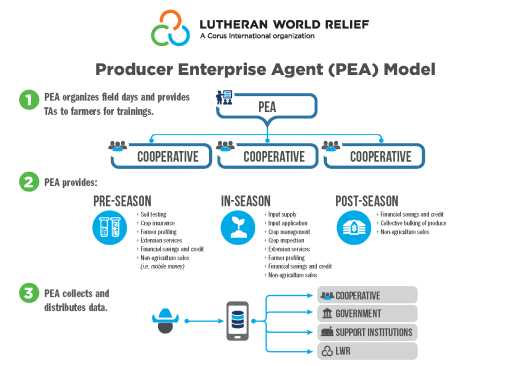Achieving Food Safety: A White Paper on the Cross Section of Food Safety and Farmers in Low- and Middle-Income Countries
Reports
Achieving Food Safety: A White Paper on the Cross Section of Food Safety and Farmers in Low- and Middle-Income Countries
Foodborne illnesses cost low- and middle-income countries $110 billion in lost productivity and medical expenses each year (World Health Organization 2020). Concern for global food security first gained momentum in 2008 when the G7 countries collectively met and agreed that there was a need for a global food security initiative. Future food systems can address many of the food safety failings and ensure safe and nutritious food for all (Hendriks, et al. 2021). The U.S. government’s global food safety response is combined in its Feed the Future Strategy, corresponding Global Food Security Act of 2016, and the updated Global Food Security Strategy 2022-2026 (GFSS) which has embraced food safety as an integral part of a well-nourished population, especially among women and children. The GFSS recognizes the risk of contamination leading to foodborne illnesses in some of the most nutritious foods – fruits, vegetables, meat, dairy, and eggs.
Addressing the challenges for food traceability systems in supply chains is increasing, especially shifting from simple non-digital food traceability systems (FTS) to incorporating the use of automated FTS to blockchain digital FTS, with the aim to better test product quality, trace issues back to source of origin, and ensure food safety along the supply chain (USAID Feed the Future 2021). Coupled with strengthening the regulatory and management systems for governments, value chains, and market actors in the food system, satisfactory progress in food security and safety may be underway through interventions funded by the U.S. Agency for International Development (USAID) and other donors.
This paper is made possible from funding through the Agribusiness Market Ecosystem Alliance (AMEA) network who supports members and stakeholders in their efforts to build a cost-effective system for delivering services to farmer organizations. AMEA’s Toolbox contains peer-approved assessment tools and training and coaching curricula of members in the network. Corus International is adding to this Toolbox by writing this Food Safety White Paper to provide a synopsis of information on the food safety and sanitary issues that a farmer organization faces. Corus is also designing a food safety budget tool to help farmer organizations’ ability to cost out and plan steps to enhance their professionalism and meet food safety standards for their buyers and consumers. Over a six-month period from September 2021 – March 2022, the Corus team researched hundreds of international and national regulations and reports in the food safety sector and met with more than 10 staff of international and national organizations and US universities working in this space. Over this process, Corus learned that a food safety budget tool is not available and that there is a great deal of interest in one being developed for development practitioners to use in projects and for farmer organizations to have to plan costs for adhering to food safety of their food products. Corus envisions this tool as an educational instrument for farmers as well as a leverage device for farmers to gain resources to implement food safety practices.
Download Now May 19, 2022








